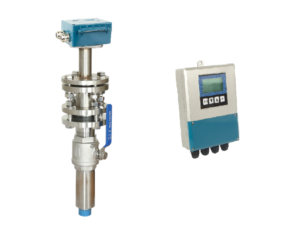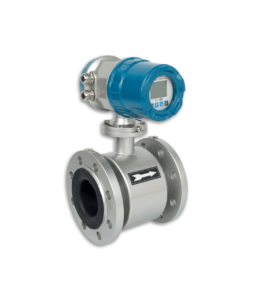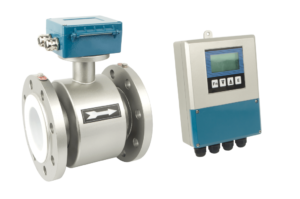After initial debugging and normal operation for a period of time, the common causes of failures during operation are adhesion layer on the inner wall of the flow sensor; lightning strikes; changes in environmental conditions.

1. The inner wall adhesion layer
Because electromagnetic flowmeters have more chances to measure suspended solids or dirt bodies than other flow meters, the probability of failure caused by the adhesion layer on the inner wall is relatively high.
If the conductivity of the adhesion layer is similar to that of the liquid, the meter can still output signals normally, but only changes the flow area, forming a hidden fault of measurement error; if it is a high conductivity adhesion layer, the electromotive force between the electrodes will be short-circuited; if it is an insulating adhesion layer, The surface of the electric board is insulated and the measuring circuit is disconnected. The latter two phenomena will make the meter unable to work.

2. Lightning strike
Lightning strikes induce instantaneous high voltage and surge current in the line; entering the meter will damage the meter. There are three ways to introduce lightning damage to the instrument: the power line, the flow signal line between the sensor and the converter, and the excitation line. However, from the analysis of parts damaged by lightning faults, most of the induced high voltage and surge currents that cause the fault are introduced from the control of the empty power line, and the other two methods are less. Also learned from the scene of the lightning strike.
Not only the electromagnetic flowmeter fails, but also other instruments in the control room often have lightning strikes at the same time. Therefore, the user must recognize the importance of setting up lightning protection facilities for the power cord of the instrument in the control room.

3. Changes in environmental conditions
The main reason is similar to the fault environment during the debugging period, except that the source of interference does not appear during the debugging period and is re-inserted during the operation period. For example, an electromagnetic flowmeter with unsatisfactory grounding protection well. During the commissioning period, there is no interference source and the instrument is operating normally.
However, during the operation period, a new source of interference (such as the pipeline near the measuring point or the implementation of pipeline electric welding at a distance) interferes with the normal operation of the instrument, The output signal fluctuates greatly.
